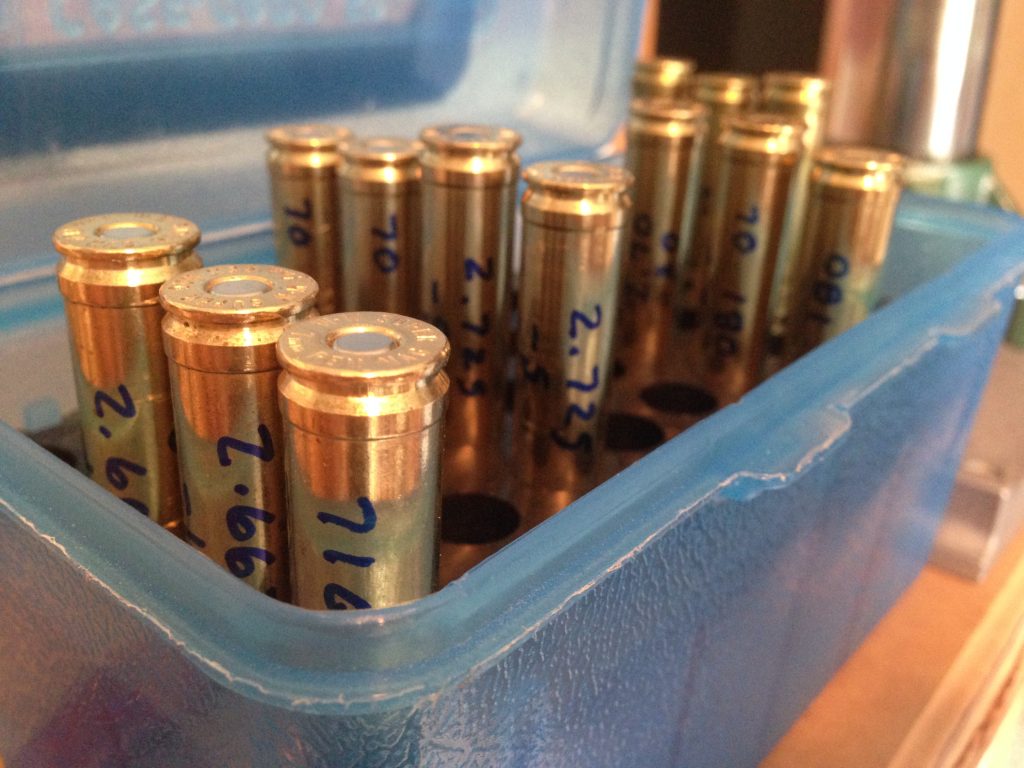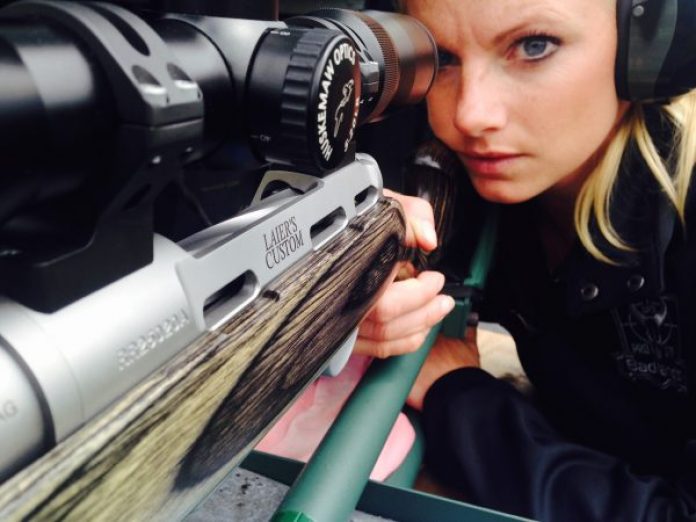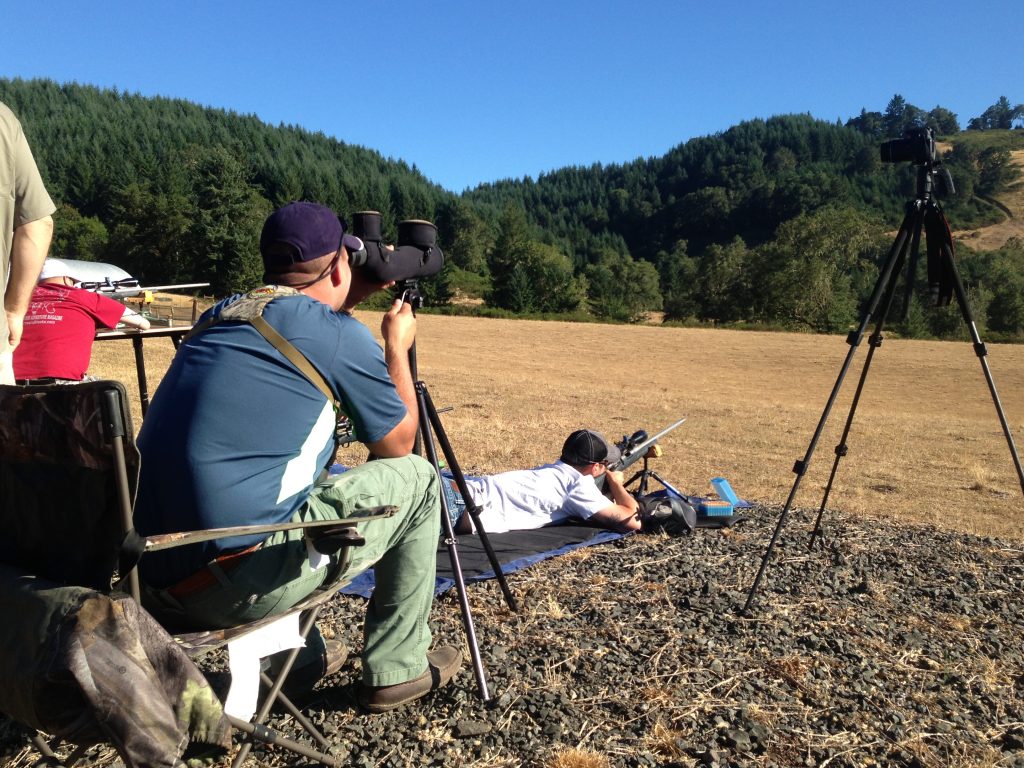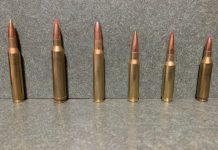Written by: Amy Spoon
Buying a new hunting rifle is really exciting! It will probably leave you daydreaming about the upcoming season; the first time you will have it set in the perfect rest, your target in the scope, that last breath before you squeeze the trigger, and the brief heart pounding quietness that follows as you realize your bullet hit its mark exactly right. It’s totally fine to daydream, but you first have some work to get that new gun dialed in so you have the performance and accuracy you are hoping for.
When buying a new rifle you need to make sure to choose the correct gun that matches your anticipated use, taking into account your hunting style, the environment you hunt in, and what you intend to hunt. One option is to go into any gun store and have them help you pick out a gun based on your needs and wants. Another option is to go the custom-built route. I recently did this, and I love the benefits of having a rifle built for specifically me. I was able to work very closely with my gunsmith, Jeremy Laier of Laier’s Custom Gunsmithing, to make decisions on every aspect of the gun. Then I gave him three goals for my rifle, and the outcome was better than expected.
First, I wanted a gun that fit my smaller female frame. Second, I wanted a rifle one consistently accurate at 800 yards. Third, I wanted it as light as possible. Now I know lightweight and long range don’t exactly go together, but by customizing every aspect of the build, all three goals were met. I now have a gun I can cuddle up to and be comfortable shooting all day, it doesn’t feel like I’m hauling a tank around the woods, and I can shoot great 800-yard groups. The sky is the limit when it comes to customizing a hunting rifle.
Regardless of whether you customize your rifle or buy one out of the box, once you have it in your hands you will probably want to start firing rounds through it at the practice range. However, there are some steps you should first take to dial in your gun.
First, you should properly break in your barrel. Despite the allure of the gun range, breaking in your barrel must come first. If you think you will be able to just go out and start shooting great groups, or get consistent accuracy at longer distances, think again. A brand new barrel can take dozens of shots during the break-in process before you can expect consistent accuracy or stable velocities. Getting your gun to the point where you see stable velocities with a given load is crucial if you will be collecting data for a custom turret on long-range setups.
This is a somewhat tedious process, but it is crucial for long barrel life, and for that top-notch accuracy we all look for in a rifle. The purpose for breaking in your barrel is to polish the bore and to smooth out any imperfections, such as tiny burrs, that may have shown up during the manufacturing process. The copious amount of cleaning that takes place during this process is to prevent a layer of copper fouling to build up between the bore and the bullet. It is like buying a new car and the dealership gives you advice to take it easy the first 1,000 miles so you don’t damage the vehicle while you are breaking in the engine. So it is with rifles.
It is also a really good idea to boresight your rifle before your first shot to get a rough alignment on your target. Shorter distance targets are fine for this purpose. Place a target at 50 yards, get your rifle set in your rest, remove the bolt, and line up your barrel on the target by looking through the barrel. Without moving the gun, look through your scope and use the adjustments on your scope to achieve the same picture as you had looking through the barrel. A laser boresighter is another option to help you do this. After boresighting your rifle, you should be on paper for your first shot.
The break-in process is essentially a series of shooting and cleaning. Every barrel from every manufacturer is different and requires a different level of work, from almost no break-in to a more extensive process. Your best bet is to follow the manufacturer recommendations.
As you are breaking in your barrel you can play with your scope, but don’t be too worried about getting it perfect just yet. Once your barrel is broken in, you’ll want to develop a custom load or find the factory ammo that your gun likes to shoot and produces groups that you are happy with. If you are developing your own load, there are so many variations you can develop to perfect your gun’s performance. You can play with different types of powder, the amount of powder, overall length, distance from the lands, etc…. If you are going with factory ammunition, play with different brands to find the right one for you.

Finding the right load for your gun boils down to grouping. Even at this point, you don’t need to be shooting bullseyes. You just want good groups. Set up a bench rest target at 100 yards and start shooting groups of three or four until you find the grouping you desire. Again, don’t worry about hitting the bulls-eye. You are on the hunt for the best group you can get, no matter where it is on the paper.
Once you have found what kind of ammo your gun likes, sight in the scope. At this point you have already bore sighted your gun, you have found the load you will be using, and you know where that load is grouping in relation to the center of the target at 100 yards. Now, you just need to adjust the windage and elevation turrets on your scope to get that group to land exactly where you want.
Where you set your zero depends on your rifle, your scope, and your reticle system. I personally set my zero at 200 yards and have the luxury of being able to sight in at that distance. If your shooting system or your preference also leads you to zero at 200 yards, but are sighting in at 100 yards, you will need to determine how high you should be at 100 yards to be dead on at 200 based on your bullets ballistics. This is usually listed on the boxes for factory ammunition.
Once you have sighted your scope you are ready to have some fun! Be sure to keep testing what you think the gun should be doing versus what it is actually doing, and then make adjustments as needed. Hopefully, you have left yourself with enough time before hunting season to play with your gun and to get familiar with all its aspects. If you have only shot out of something like a Caldwell Lead Sled, it’s time to start shooting as if it were a real hunting situation. Keep practicing and get in as much trigger time as possible. Getting to know how your gun performs in all conditions, and knowing how to compensate for those changing conditions, can mean all the difference.
















